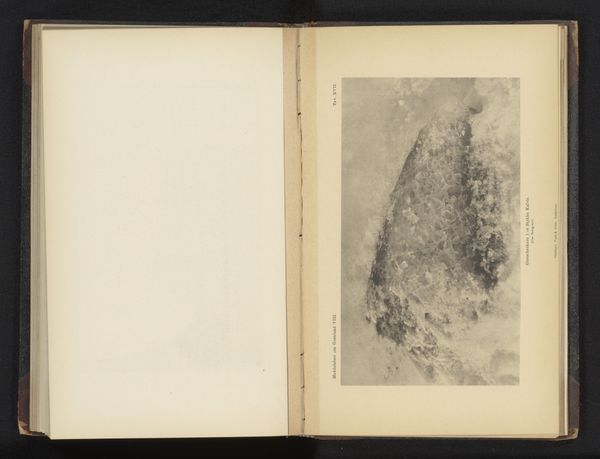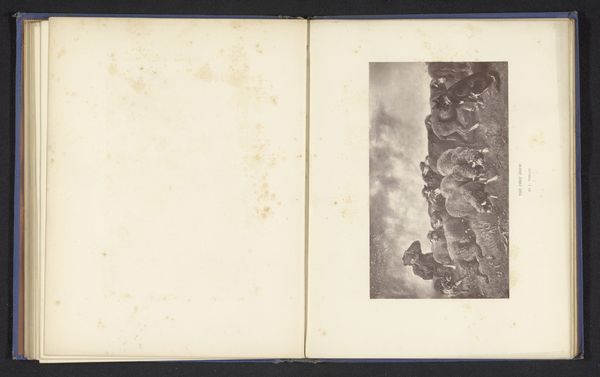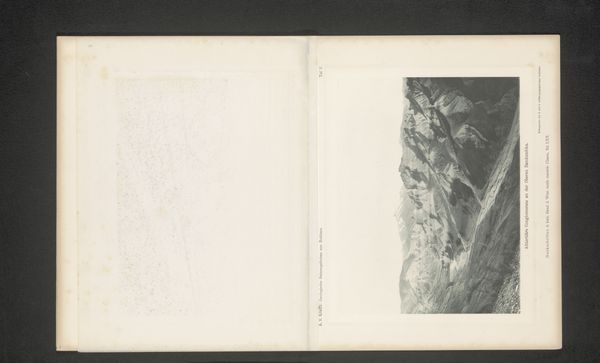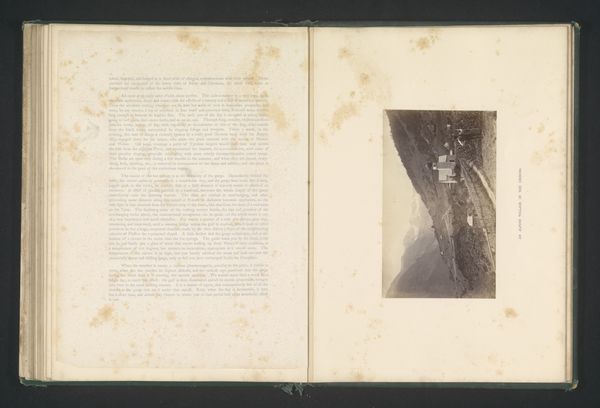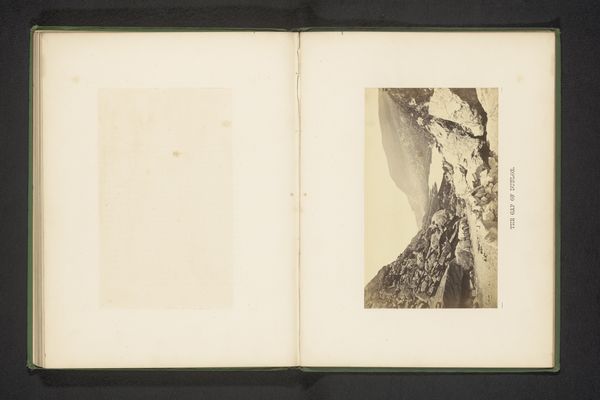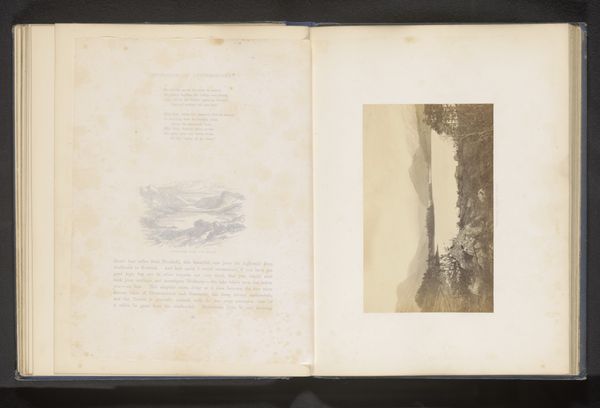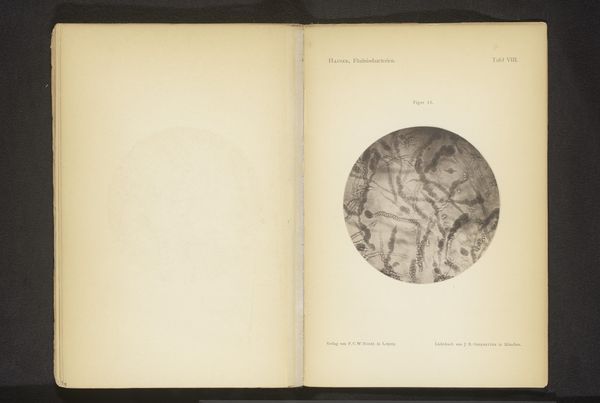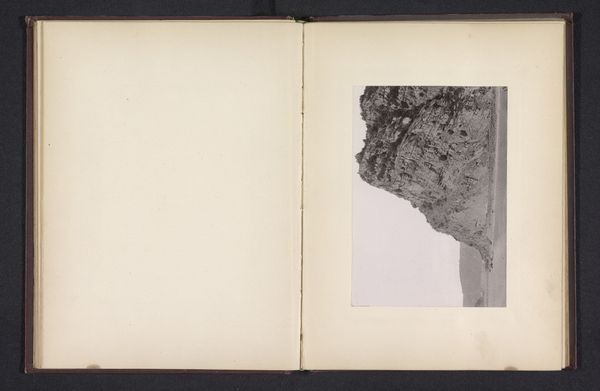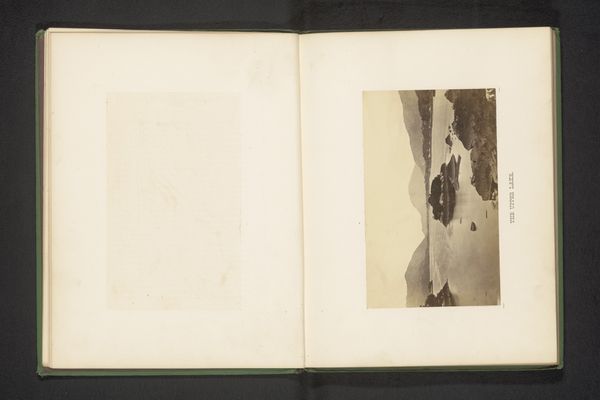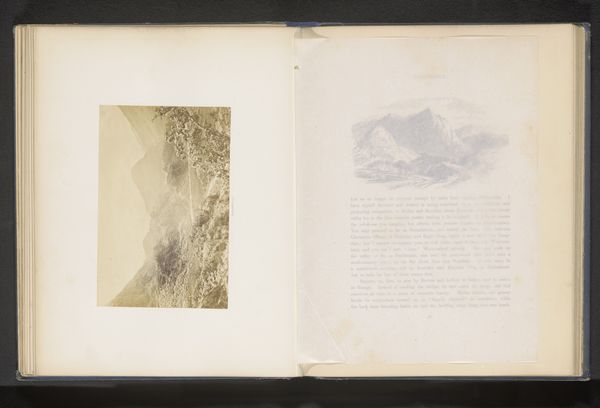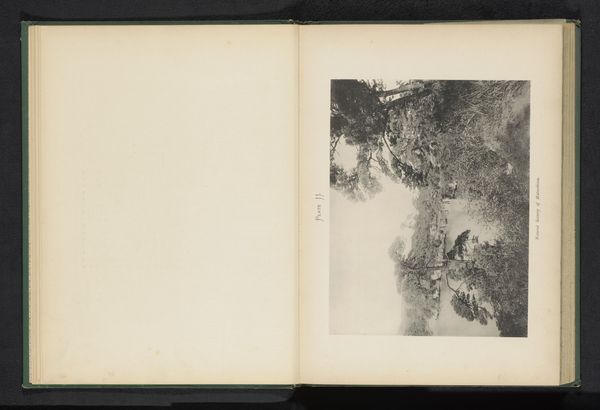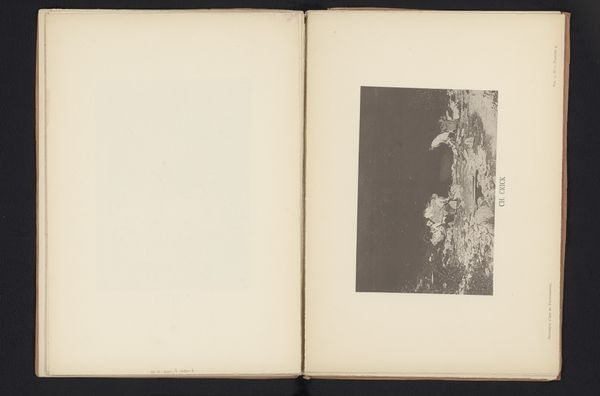
Dimensions: height 186 mm, width 125 mm
Copyright: Rijks Museum: Open Domain
Editor: Here we have an image titled "Gezicht op de Aiguille du Dru," a photograph, specifically a daguerreotype, from before 1868. The mountain looms so dramatically; I'm curious how photography at that time shaped our understanding and perception of nature. What do you see in this piece? Curator: Well, beyond the striking Romantic landscape, this image invites us to consider the cultural power dynamics embedded within the genre. How does photography, often framed as objective, actually reinforce existing power structures? This image presents nature as a sublime spectacle, ripe for conquest and control. How might the proliferation of these images affect, say, indigenous communities or land rights in the face of colonial expansion? Editor: That's a powerful point. I was focused on the beauty, but I see how it also documents a particular worldview. Did these early landscape photographs serve a similar purpose as landscape paintings did in constructing national identity or promoting imperial ambitions? Curator: Precisely! Think about the Romantic painters and their visions of untamed wilderness. This photograph adopts that visual language and further reinforces the idea of a nature both awe-inspiring and ready for 'improvement'. We need to unpack how this image might normalize the exploitation of natural resources under the guise of progress or civilization. Consider who had the access and means to create and consume such imagery at that time, and who was excluded from these representations. Editor: I see how focusing on the "gaze" itself reveals a deeper narrative. I’ll never see a landscape photo the same way. Thank you! Curator: Indeed, art can be a potent vehicle for understanding the intersections of power, representation, and lived experiences.
Comments
No comments
Be the first to comment and join the conversation on the ultimate creative platform.
